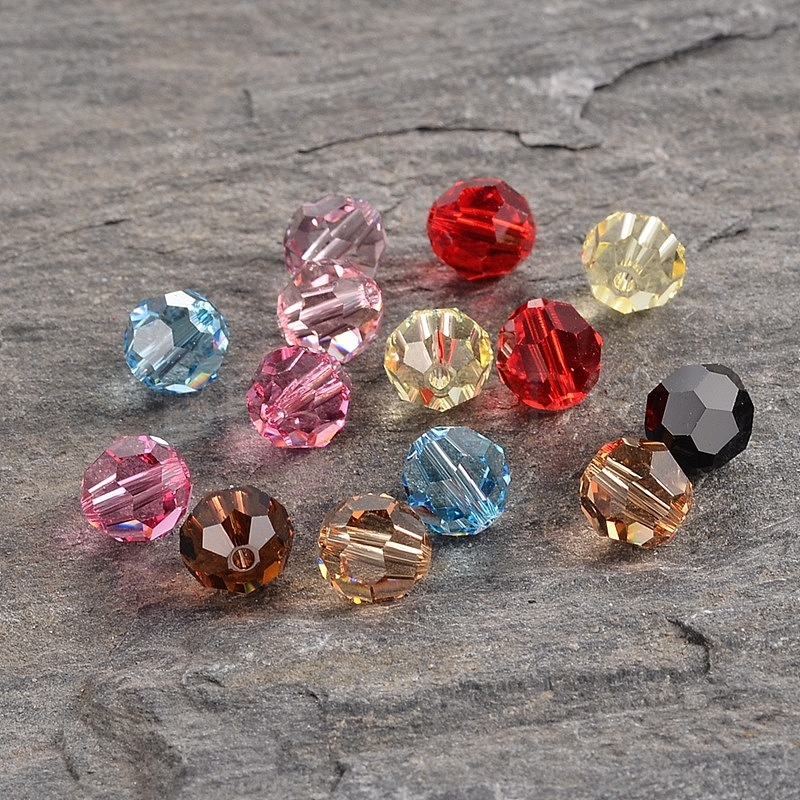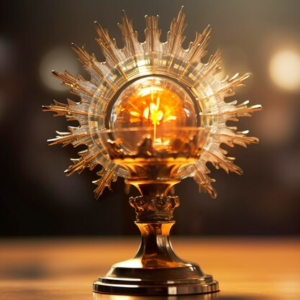Austrian crystal
Austrian crystal is a type of crystal that has gained significant popularity and is known for its quality and beauty. Here’s a detailed exploration of it:
Definition and Origin
- What it is: Austrian crystal is not a natural crystal in the traditional sense but rather a type of high-quality cut glass that is made to mimic the appearance of genuine crystals like quartz or Swarovski crystals. It is crafted through precise manufacturing processes and is renowned for its clarity, sparkle, and ability to refract light in an eye-catching manner.
- Geographical Association: As the name suggests, it has strong ties to Austria. Austria has a long history of glassmaking traditions that date back centuries. The country’s glass artisans have developed advanced techniques over time to produce these high-quality crystal-like glass products. Regions like Bohemia (which was part of the Austro-Hungarian Empire and now lies in the Czech Republic) also had a significant influence on the development of what we now know as Austrian crystal, with a shared heritage of fine glasswork.

Manufacturing Process
- Raw Materials: The base material for Austrian crystal is usually a high-quality glass mixture. This typically includes silica (sand), soda ash, and lime, among other ingredients. The proportions of these components are carefully controlled to achieve the desired properties such as hardness, transparency, and workability. For example, a higher silica content can contribute to increased hardness and better resistance to scratching, while soda ash helps lower the melting point of the glass for easier processing.
- Melting and Forming: The raw materials are first melted together in a furnace at high temperatures, typically ranging from around 1500 to 1600 degrees Celsius. Once in a molten state, the glass can be shaped using various methods. It might be blown into molds to create different forms like vases, bowls, or figurines, or it could be drawn into rods or tubes for further processing into beads or other decorative elements.
- Cutting and Polishing: What truly sets Austrian crystal apart is the intricate cutting and polishing process. Skilled artisans use specialized cutting tools to create precise facets on the surface of the glass. These facets are designed to catch and reflect light in a way that maximizes its sparkle and brilliance. The cutting can range from simple geometric patterns to highly elaborate and intricate designs, depending on the intended final product. After cutting, the crystal is carefully polished to achieve a smooth and shiny finish that further enhances its visual appeal.
Characteristics
- Clarity: Austrian crystal is known for its high level of clarity. It is almost as clear as natural crystals, giving it an elegant and refined look. When you hold an Austrian crystal item up to the light, you can see through it with minimal distortion, just like with a high-quality natural crystal piece.
- Sparkle and Refraction: It has excellent light-refracting properties. The carefully cut facets on its surface cause light to bounce around inside the crystal and be dispersed in a dazzling display of colors. This creates a brilliant sparkle that makes it stand out, whether it’s used in jewelry, home decor items, or as part of a chandelier. For example, in a crystal chandelier made with Austrian crystal, the light from the bulbs is refracted and scattered throughout the room, creating a glamorous and luxurious atmosphere.
- Durability: While not as hard as some natural crystals like diamond or quartz, Austrian crystal is relatively durable for a glass product. It can withstand normal handling and wear to some extent, although it is still more prone to scratching and breaking compared to tougher natural crystals. However, with proper care, items made from Austrian crystal can last for a long time and maintain their beauty.
Applications
- Jewelry: Austrian crystal is widely used in jewelry making. It can be set in rings, necklaces, earrings, and bracelets to create affordable yet glamorous pieces. Many costume jewelry designers choose Austrian crystal because it offers a similar look to precious gemstones at a fraction of the cost. For example, a necklace with Austrian crystal beads can mimic the look of a diamond tennis necklace, making it accessible to a broader range of consumers who want to add a touch of sparkle to their outfits.
- Home Decor: It is a popular choice for home decor items. From crystal vases that can hold flowers and adorn dining tables or mantelpieces, to crystal figurines that serve as decorative accents in living rooms or bedrooms, Austrian crystal adds a touch of elegance and luxury to any space. Chandeliers made with Austrian crystal are also highly sought after for grand entryways, dining rooms, or ballrooms, as they can transform the ambiance of the room with their dazzling light display.
- Fashion and Accessories: In addition to jewelry, Austrian crystal is used in other fashion accessories such as hairpins, brooches, and shoe clips. It can enhance the overall look of an outfit and add a touch of glamour to any ensemble, whether it’s for a formal occasion or just to add some sparkle to everyday wear.
Comparison with Other Crystals
- Compared to Natural Crystals: Unlike natural crystals that are formed over long periods in the earth’s crust through geological processes, Austrian crystal is man-made. Natural crystals have unique internal structures and compositions that give them specific physical and chemical properties. For example, a natural quartz crystal might have inclusions or variations in color that are characteristic of its formation conditions. Austrian crystal, on the other hand, can be produced with more consistent quality and appearance in terms of clarity and sparkle, although it lacks the natural rarity and some of the unique geological features of true crystals.
- Compared to Swarovski Crystals: Swarovski crystals are also a well-known type of cut glass with high quality and a distinct brand identity. While both Austrian crystal and Swarovski crystals share similarities in terms of their manufacturing processes and the goal of achieving excellent clarity and sparkle, Swarovski crystals are often associated with a particular brand and may have some proprietary techniques or higher precision in their production. Swarovski crystals are sometimes considered a premium option within the realm of cut glass crystals, while Austrian crystal represents a broader category of high-quality glass products from Austria that can offer great quality at a more accessible price point.
In summary, Austrian crystal is a remarkable type of cut glass that combines artistry, quality manufacturing, and a luxurious appearance, finding wide application in jewelry, home decor, and fashion accessories, and offering an affordable alternative to natural crystals for those seeking beauty and sparkle.


Leave a Reply
Want to join the discussion?Feel free to contribute!